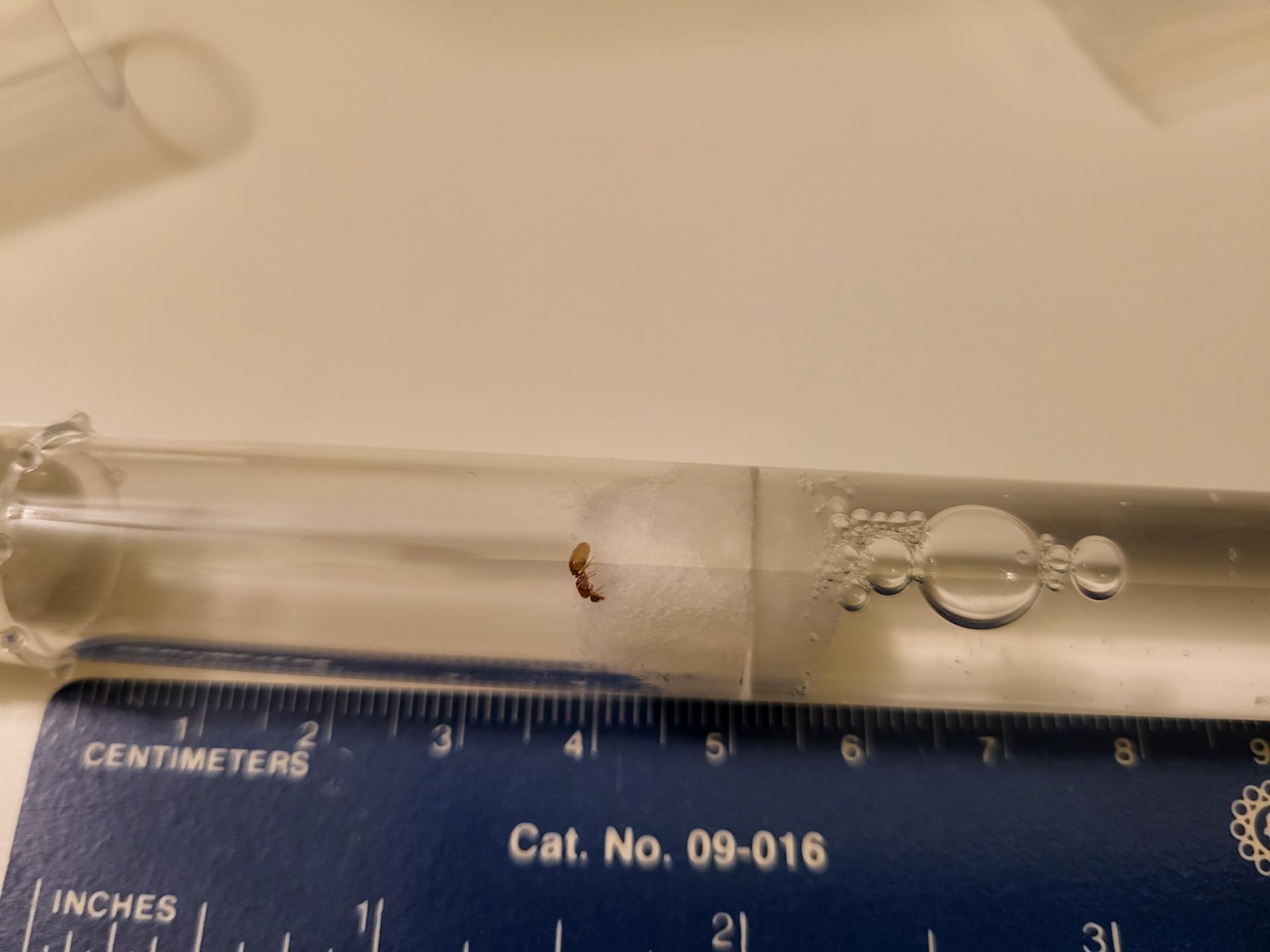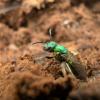- Formiculture.com
- Forums
- Gallery
- Members
- Member Map
- Chat

Can someone please identify this queen ant? Maryland 7/13/2025
Started By
Antdaddy
, Jul 13 2025 4:32 PM
3 replies to this topic
#1
 Offline
-
Posted July 13 2025 - 4:32 PM
Offline
-
Posted July 13 2025 - 4:32 PM
I found a tiny orange queen ant 2 days ago. It is 4 or 5 mm long and all orange. Can someone identify this queen.
#2
 Offline
-
Posted July 13 2025 - 4:34 PM
Offline
-
Posted July 13 2025 - 4:34 PM
solenopis molesta
#3
 Offline
-
Posted July 13 2025 - 4:36 PM
Offline
-
Posted July 13 2025 - 4:36 PM
seconding S. molesta group
Edited by Mettcollsuss, July 13 2025 - 4:37 PM.
#4
 Offline
-
Posted July 13 2025 - 4:45 PM
Offline
-
Posted July 13 2025 - 4:45 PM
solenopis molesta
seconding S. molesta group
To clarify, it is believed that Solenopsis molesta is actually several related species. Some distinct species in the S. molesta species group have already been described, such as Solenopsis texana and S. carolinensis down south.
Solenopsis molesta species complex - AntWiki
I third S. molesta group.
"God made..... all the creatures that move along the ground according to their kinds (including ants). And God saw that it was good. Genesis 1:25 NIV version
Keeping:
Tetramorium immigrans Camponotus vicinus, modoc, novaeboracensis, herculeanus
Formica pallidefulva, argentea Solenopsis molesta
Formica cf. aserva Lasius brevicornis, neoniger
0 user(s) are reading this topic
0 members, 0 guests, 0 anonymous users
















